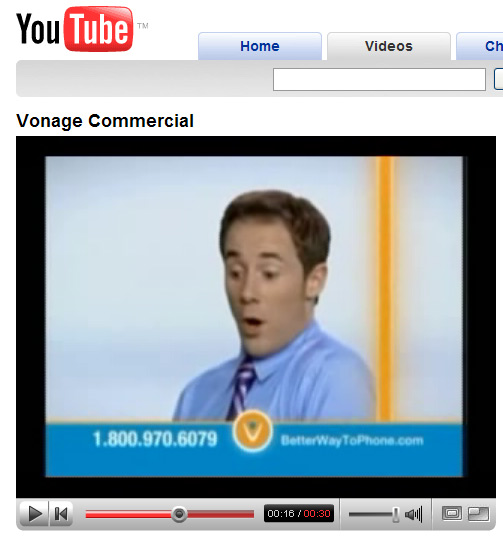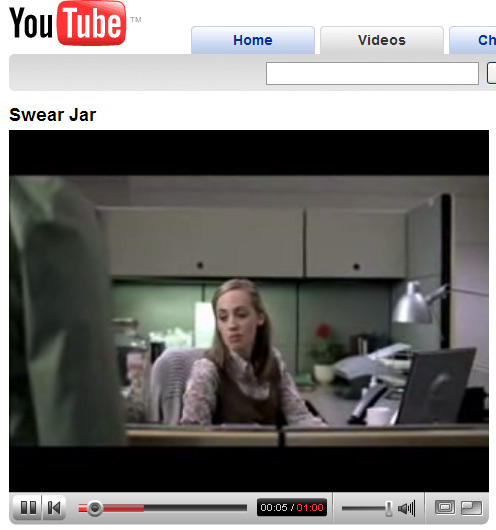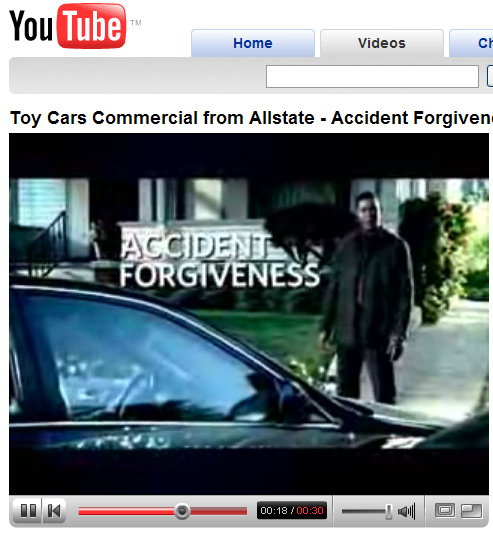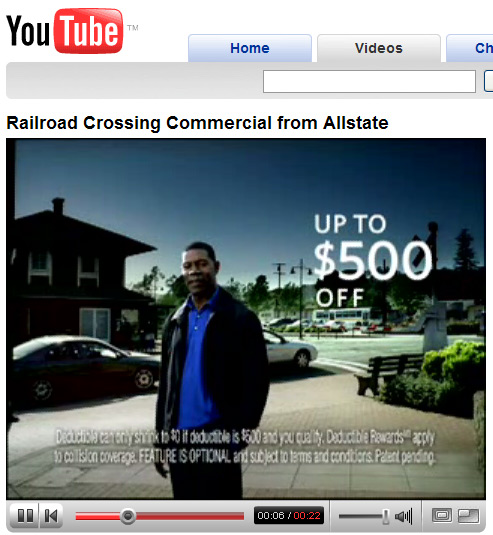


What's Wrong with this Video?
Author: Lori Alden
Audience: High school and college students
Time required: About 5 minutes per video
Summary: This is a series of YouTube videos that can be used to launch classroom discussions about economic issues.
Video #1:
Concept: Real vs nominal, interpreting graphs. What happens in the video? A man representing "the phone company" says that "for over 100 years, the only thing we've changed is ... " when the Vonage representative interrupts him to say "Your prices?" (Click on the image to access the YouTube video.)
Have your students examine evidence to see if AT&T rates have been rising or falling. This report by the FCC shows that phone rates fell in real terms from 1935 to 2000 (Chart 13.1 on page 105). This report shows that phone rates for toll calls also fell in real terms from 2000 to 2006 (see Charts 1 and 2 on pages 48 and 49).
Video #2:
Concept: Public goods and the free rider problem. What happens in the video? Two office workers discuss a new swear jar into which co-workers are supposed to put a quarter each time they swear. The man asks what the money will be used for and the woman says, "I don't know--we'll use it to buy something for the office, like a case of Bud Light or something." The rest of the video shows office workers swearing every chance they can. (Note: This exercise may not be appropriate for high school students, since it promotes both beer and profanity.)
The commercial assumes that the office workers don't object to contributing to a pool of money that will be used to buy a collective good--beer that can be consumed by anyone in the office, regardless of how much they contributed to the swear jar.
If people really behaved this way, there would be less need for the government to provide public goods like fireworks, roads, police protection, and lighthouses, since these services could be financed through private contributions. But the free rider problem suggests that consumers tend to contribute less to public goods than the cost of what they expect to consume. In this case, economists would predict that the office workers wouldn't contribute enthusiastically to the swear jar, since they'd be able to consume beer whether they contributed or not. (Note: Beer isn't a pure public good. It's non-excludable, but rival.)
Videos #3A and 3B: Allstate Insurance
Concept: Opportunity cost. What happens in the video: In the first video, the announcer says that Allstate won't raise your rates if you get into an accident. In the second, the announcer says that Allstate will cut your deductible if you don't have any accidents. (Note: Click on each photo to launch the video.)
The concept of opportunity cost suggests that Allstate doesn't really forgive accidents. If you have an accident, you lose the opportunity to pay lower deductibles (an opportunity worth up to $500, according to the commercial).
© Lori Alden, 2008. All rights reserved. You may download the content, provided you only use the content for your own personal, non-commercial use. Lori Alden reserves complete title and full intellectual property rights in any content you download from this web site. Except as noted above, any other use, including the reproduction, modification, distribution, transmission, republication, display, or performance, of the content on this site is strictly prohibited.




